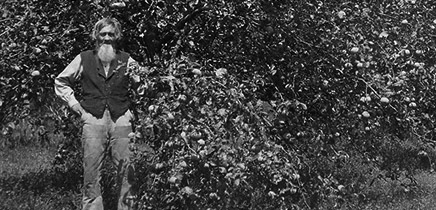What is a migrant worker? A migrant worker is someone who travels place to place in search of work, often following harvest schedules and weather patterns. Migrant workers often work the jobs not wanted by locals, involving hard labor, long hours, and little pay. One field common to migrant labor is farming, which means outdoor work in all weather, often bent or hunched to tend plants and weeds.
While many migrant workers in Minnesota are Hispanic, especially in Carver County, they are by no means the only migrant workers in Minnesota or elsewhere in the U.S. For the purpose of this article, however, they will provide the focus as there is more data available. The 1900 and 1910 census data for Minnesota lists no Hispanic residents. 1920 lists one, then 1930 jumps to 54 (though these numbers may not be accurate as migrant workers were often classified under “white”). The reason for this initial growth in migrant labor was two-fold.
A violent revolution in Mexico in the early 1900s caused many Mexicans to lose their livelihood and journey to Texas either legally or illegally. In Texas, they were discriminated against and confined to certain areas, forcing them to seek elsewhere for work. There were also major economic changes, and many Mexicans in Texas lost land or jobs. In Chaska, the Carver County Sugar Company, (later the Minnesota Sugar Company and then Crystal Sugar), opened its doors in 1906. A higher demand for sugar led to larger fields and more need for labor. During the “Campaign” from November to January (the planting, cultivating, and harvesting period), sugar beets required almost 24-hour a day labor. This led the sugar company to create housing along Stoughton Avenue and pay for travel expenses to be more attractive to migrants. The Immigration Act of 1924 limited immigrants from Europe, Asia and Africa, not Mexico. Many sugar factories sent recruiters south to Texas to find workers from Texas and Mexico.
During the 1930’s, the numbers of migrant workers dropped. As people struggled by, prejudice against migrants taking work increased, and many migrant workers were deported to Mexico and their jobs given to a white man. The 1940’s saw a return of migrant workers with WWII taking many men away and the growth of the local canning industry with the Mayer Canning Company (later Green Giant) and the M.A. Gedney Pickling Company in Chaska. Jobs were found not only in the fields that supplied these companies, but in the factories themselves.
The 1940’s also saw the start of the Bracero Program. Bracero is a term for laborer derived from the Spanish word brazo which means arm, as in “one who works with his arms”. On August 4, 1942 the United States concluded a temporary agreement for the use of Mexican agricultural labor (officially referred to as the Mexican Farm Labor Program), and the influx of legal temporary Mexican workers began. The program continued with the U.S. entry into the Korean War and continuing labor shortage. It was formalized by Congress with Public law 78 in 1951. Between 1942-1964, 4.6 million contracts were signed, with many returning year after year, making it the largest U.S. contract labor program. However, it could take months to recruit workers after getting through all the paperwork and red tape.
In the 21st century, more Hispanic people are choosing to make Carver County their permanent home, rather than passing through for work. Thousands of migrant workers still come to Minnesota each year, though many go to the Red River Valley and Willmar/Granite Falls/Montevideo areas instead. We may have fewer migrant workers in Carver County, but their history endures.
Related Resources:
[Primary]
Bracero History Archive website. “About”. Accessed August 13, 2014. http://braceroarchive.org/about
The Invisible Hands That Feed Us. Traveling exhibit. Carver County Historical Society, 2013.
Machtemes, Elsie. “Harvesting Hopes.” Waconia Patriot, September 13, 1984.
Olson, Mark W. “Fields of Memory.” Chaska Herald, October 23, 2009.
“Robinson Spends Two Months in Quest for Labor.” Weekly Valley Herald, May 27, 1943.
“Sugar Factory Ends Sixty-Three Day Run.” Weekly Valley Herald, December 4, 1952.
[Secondary]
“1915 Banner Year in History of the Minnesota Sugar Company.” Weekly Valley Herald, December 16, 1915.
“New Ruling for Beet Labor Made for 1938.” Weekly Valley Herald, August 18, 1938.
Norris, Jim. North for the Harvest: Mexican Workers, Growers, and the Sugar Beet Industry. St. Paul: Minnesota Historical Society Press, 2009.
“Peterson Named Local Farm Help Recruiter.” Weekly Valley Herald, May 20, 1948.
“What Tony Can Teach Us.” Editorial. Chaska Herald, October 23, 2009.


